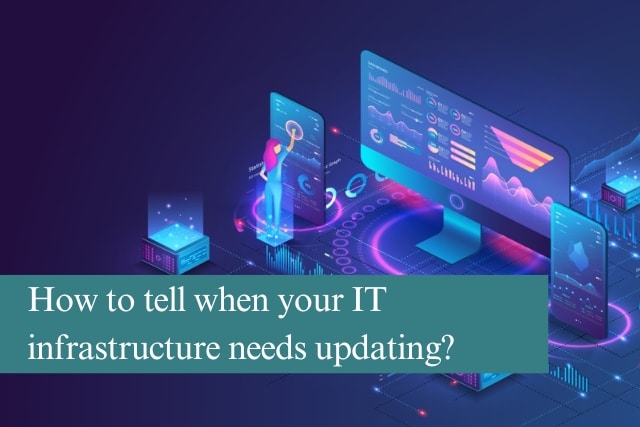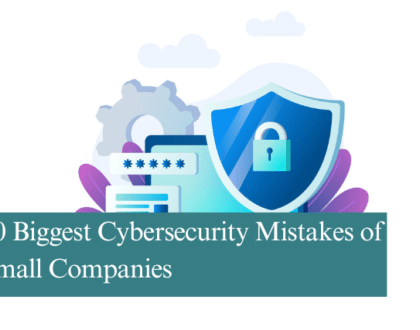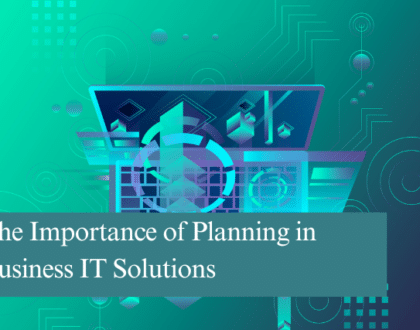
Here are key signs that your IT infrastructure might need an upgrade, along with steps that you can take.
Slow System Performance
One of the most obvious signs that your IT infrastructure is outdated is a noticeable decline in system performance. If your employees frequently experience slow processing speeds, prolonged boot times, or lag during everyday tasks, it’s a clear indicator that your hardware or software may be outdated.
Step: Evaluate the age and performance of your hardware. Upgrading to newer, faster equipment or optimising your existing setup can significantly improve performance.
Increasing Downtime
Frequent system crashes, server downtime, or network outages disrupt operations and can be costly. As systems age, they are more prone to failures due to wear and tear or incompatibility with newer software.
Step: Monitor downtime incidents and perform a root cause analysis. Investing in reliable, modern servers and networking equipment can enhance stability and reduce downtime.
Security Vulnerabilities
Cybersecurity threats are constantly evolving, and older systems are more vulnerable to attacks. If your IT infrastructure lacks the latest security features or is no longer supported by the manufacturer, it may be at risk.
Step: Conduct regular security audits and ensure that your systems are up-to-date with the latest security patches and updates. Implement advanced security measures such as firewalls, intrusion detection systems, and encryption.
Incompatibility with Modern Software
As software developers release new applications and updates, older hardware and operating systems may struggle to support them. This can lead to compatibility issues, reducing efficiency and limiting the functionality of your tools.
Step: Review your software requirements and ensure your hardware is capable of supporting the latest versions. Upgrading your operating systems and hardware can help maintain compatibility and performance.
Limited Scalability
As your business grows, your IT infrastructure must be able to scale accordingly. If you find that adding new users, devices, or applications is becoming increasingly difficult, it may be time to update your infrastructure.
Step: Consider adopting scalable solutions such as cloud computing, which allows you to easily expand resources as needed. Virtualisation can also help maximise the utilisation of your existing hardware.
High Maintenance Costs
Older IT systems often require more maintenance, leading to higher costs over time. Frequent repairs, replacements, and the need for specialised support can add up quickly.
Step: Perform a cost-benefit analysis comparing the ongoing maintenance costs of your current infrastructure with the cost of upgrading to new equipment. Investing in new technology may offer long-term savings.
Poor User Experience
If your employees are frustrated with slow, unreliable, or cumbersome technology, their productivity and morale can suffer. Modern, user-friendly systems can enhance the user experience and boost efficiency.
Step: Solicit feedback from your staff regarding their experience with current systems. Identify pain points and seek solutions that can improve usability and satisfaction.
Lack of Support for Remote Work
The shift towards remote work has highlighted the need for flexible, reliable IT infrastructure. If your current setup struggles to support remote access or collaboration, it’s a sign that an upgrade is needed.
Step: Invest in cloud-based solutions and secure remote access technologies. Tools like VPNs, remote desktops, and collaboration software can facilitate effective remote work.
Outdated Backup and Recovery Solutions
Reliable data backup and recovery solutions are essential for business continuity. If your current system is outdated or insufficient, you risk losing critical data during a disaster.
Step: Evaluate your backup and recovery strategy. Modern solutions, such as cloud backups and automated recovery systems, can offer enhanced protection and quicker recovery times.
Regulatory Compliance Challenges
Keeping up with regulatory requirements is crucial for avoiding fines and maintaining your reputation. If your IT infrastructure cannot support the necessary compliance measures, it’s time for an upgrade.
Step: Ensure that your systems and processes align with the latest industry regulations. Implement compliance management software to help automate and manage regulatory requirements.
Conclusion
Upgrading your IT infrastructure is not just about keeping up with the latest technology trends; it’s about ensuring that your business runs smoothly, securely, and efficiently. If you recognise any of the signs mentioned above in your organisation, it may be time for a comprehensive review of your IT infrastructure.
Contact Us for an IT Infrastructure Review
Is your IT infrastructure showing signs of age? Contact us today for a thorough IT infrastructure review. Our experts will assess your current setup, identify areas for improvement, and help you implement solutions that will keep your business running at its best.
Recommended Posts

How to Get the Most Out of Your IT Budget
25th April 2025

10 Biggest Cybersecurity Mistakes of Small Companies
18th April 2025

The Importance of Planning in Business IT Solutions
11th April 2025
